
A planet is an astronomical body orbiting a star or stellar remnant that is massive enough to be rounded by its own gravity, is not massive enough to cause thermonuclear fusion, and has cleared its neighbouring region of planetesimals.
The Cardassians are an extraterrestrial species in the Star Trek science fiction franchise. Introduced in the 1991 Star Trek: The Next Generation episode "The Wounded", the species originated on the fictional Alpha Quadrant planet Cardassia Prime. Cardassians were the dominant species in an interstellar empire known as the Cardassian Union during the 24th century, although they are not confirmed to have ruled any other species aside from, for fifty years, the Bajorans. The Cardassians later played a key role in the story line of the Star Trek: Deep Space Nine series as allies of the Dominion in the Dominion War. Several Cardassian characters, including Elim Garak and Gul Dukat, are prominently featured.

In the fictional Star Trek universe, the United Federation of Planets (UFP) is the interstellar government that sent Captain Kirk, Mr Spock, and the crew of the starship Enterprise on its mission of peaceful exploration. Commonly referred to as "the Federation", it was introduced in the television show Star Trek (1966-1969). The survival, success, and growth of the Federation and its principles of freedom have become some of the Star Trek franchise's central themes.

The Planetary Society is an American internationally active, non-governmental, nonprofit foundation. It is involved in research, public outreach, and political advocacy for engineering projects related to astronomy, planetary science, and space exploration. It was founded in 1980 by Carl Sagan, Bruce Murray, and Louis Friedman, and has over 50,000 members from more than 100 countries around the world.
The space opera interstellar epic Star Wars uses science and technology in its settings and storylines. The series has showcased many technological concepts, both in the movies and in the expanded universe of novels, comics and other forms of media. The Star Wars movies' primary objective is to build upon drama, philosophy, political science and less on scientific knowledge. Many of the on-screen technologies created or borrowed for the Star Wars universe were used mainly as plot devices.

Space Runaway Ideon is a 1980 anime television series produced by Sunrise, created and directed by Yoshiyuki Tomino, produced immediately following his most famous work, Mobile Suit Gundam. It first premiered on TV Tokyo from 1980 to 1981, followed by two feature films in 1982, and was later broadcast in Japan by the satellite TV network Animax from September 2006.

SolarQuest is a space-age real estate trading board game published in 1985 and developed by Valen Brost, who conceived the idea in 1976. The game is patterned after Monopoly, but it replaces pewter tokens with rocket ships and hotels with metallic fuel stations. Players travel around the sun acquiring monopolies of planets, moons, and man-made space structures. They seek to knock their opponents out of the game through bankruptcy, as well as optional laser blasts and dwindling fuel supplies.
In both science fiction and utopia/dystopian fiction, authors have made frequent use of the age-old idea of a global state and, accordingly, of world government.
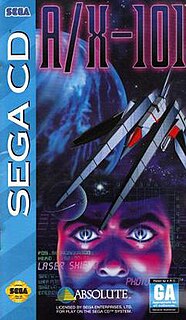
A/X-101 (エーエックス101) is a 1994 rail shooter/FMV video game for the Sega Mega-CD.
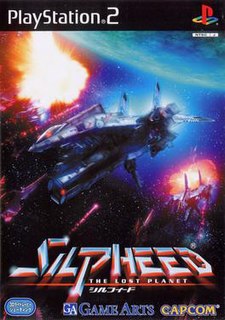
Silpheed: The Lost Planet is a 2000 shooter video game. It is a direct sequel to Silpheed. It was developed by Treasure Co. Ltd and Game Arts, and published in North America by Working Designs. The game is a vertical scrolling shooter in which the player controls 019, a Silpheed of the planet Solont's SA-77 Squadron, as it takes on countless alien enemies.

Starship Operators is a science fiction space opera light novel series written by Ryo Mizuno. Six volumes were published by MediaWorks between 2001 and 2005. A 13-episode anime adaptation produced by J.C.Staff was aired on TV Tokyo in Japan. Starship Operators is licensed in English in the United States by Geneon.

Thunder Cross is a horizontally scrolling shoot 'em up arcade game released by Konami in 1988. It used a "layered scrolling" background, a new 2D graphics technique at the time. The game spawned a sequel, Thunder Cross II, in 1991. Owing to several similarities, Space Manbow (1989) may also be considered a spin off. In 2007, Thunder Cross was included as part of the Oretachi Geasen Zoku Sono budget series on the PlayStation 2 in Japan.
Olof Möller was a Swedish science fiction author. He was very productive, though most of what he wrote can be classified as pulp, and is considered the most productive science fiction writer in Sweden. For instance, he published 29 pocket books in the Jaktrymdskepp X12 series between 1974 and 1980.
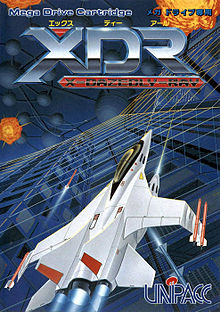
XDR (エックス・ディー・アール) is a 1990 Japanese shoot 'em up game released for the Sega Mega Drive. It is a sideways scrolling shoot 'em up containing six levels.
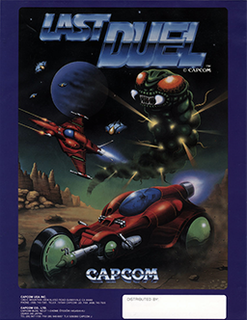
Last Duel or Last Duel: Inter Planet War 2012 is a 1988 vertical scrolling shooter arcade game released by Capcom which was available on various PCs and later came in a compilation of arcade games called the Capcom Classics Collection - Volume 2 for the PlayStation 2, Xbox and PlayStation Portable.

The Mars Orbiter Laser Altimeter (MOLA) was one of five instruments on the Mars Global Surveyor (MGS) spacecraft, which operated in Mars orbit from September 1997 to November 2006. However, the MOLA instrument transmitted altimetry data only until June 2001. The MOLA instrument transmitted infrared laser pulses towards Mars at a rate of 10 times per second, and measured the time of flight to determine the range (distance) of the MGS spacecraft to the Martian surface. The range measurements resulted in precise topographic maps of Mars. The precision maps are applicable to studies in geophysics, geology and atmospheric circulation. MOLA also functioned as a passive radiometer, and measured the radiance of the surface of Mars at 1064 nanometers.
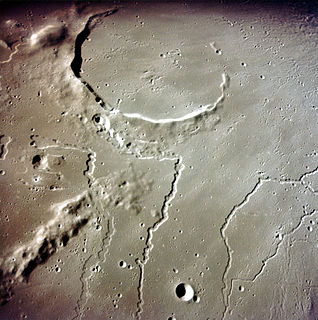
Planetary science or, more rarely, planetology, is the scientific study of planets, moons, and planetary systems and the processes that form them. It studies objects ranging in size from micrometeoroids to gas giants, aiming to determine their composition, dynamics, formation, interrelations and history. It is a strongly interdisciplinary field, originally growing from astronomy and earth science, but which now incorporates many disciplines, including planetary geology, cosmochemistry, atmospheric science, oceanography, hydrology, theoretical planetary science, glaciology, and exoplanetology. Allied disciplines include space physics, when concerned with the effects of the Sun on the bodies of the Solar System, and astrobiology.

Emily Stewart Lakdawalla is Senior Editor of The Planetary Society, contributing as both a science writer and a blogger. She has also worked as a teacher and as an environmental consultant. She has performed research work in geology, Mars topography, and science communication and education. Lakdawalla is a science advocate on various social media platforms, interacting with space professionals and enthusiasts on Facebook, Google+, and Twitter. She has appeared on such media outlets as NPR, BBC and BBC America.
















